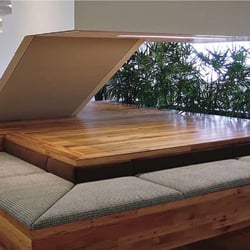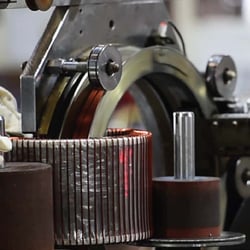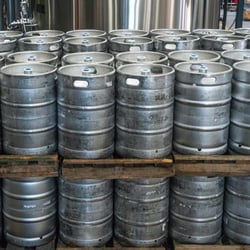Has your organization taken advantage of virtualization technology for your shop floor systems? There are six compelling reasons to do so:
- Virtualization is proven and reliable, reducing system downtime
- Virtualization reduces the amount of computer hardware an organization purchases
- Less computer infrastructure reduces the amount of power consumed, lowering energy bills and benefiting green initiatives
- Virtualization software allows you to run obsolete systems on legacy Operating Systems using modern computer hardware
- Virtualized systems require less time to support and upgrade, reducing administration costs.
- Reduce system failure risks
Virtualization is proven and reliable
VMware launched VMware Worksation in May of 1999. XenSource released Xen virtualization software in 2003. Many open source virtualization options became available.
As virtualization became more and more accepted, larger companies took notice. VMware was purchased by EMC in 2004, (EMC was acquired by Dell in 2016). Citrix purchased XenSource in 2007. Sun Microsystems released Sun xVM virtualization software in 2007. Microsoft released Hyper-V in 2008 to support virtualization demand.
Why am I giving you a history lesson? Virtualization is being used by the front office as a standard at most companies these days. The same benefits they enjoy translate directly to shop floor systems.
Use less computer hardware
If you look at the average computer you have running a shop floor system, how much of the CPU is being used? How much of the RAM? How much of the hard drive?
Shop floor systems are critical, so we naturally over specify the computer hardware. This results in a large amount of your overall computer capacity going unused. Virtualized systems share computer resources, allowing for load balancing and less required computer capacity. As a result, your organization purchases less computer hardware.
Use less energy
Yes, when you use less computer hardware you use less energy. Simple math. In many organizations aligning your upgrade plan with your green initiative not only gives you much deserved recognition, it can help you fund the project.
Support obsolete systems longer
Do you have any systems running on older computers that have a Windows XP operating system? Maybe even NT? Vista? (OK, that was an IT joke). Are you worried the hardware will fail and you won't be able to get the system running again?
Virtualization software allows you to run older operating systems on modern hardware. The true operating system running on the hardware is modern, but the virtualized image is the required operating system. The legacy system's software doesn't know the difference, and performs as it always did without the risk of hardware failure. This gives you more time to come up with a migration plan and budget to replace the legacy system.
Reduce administration costs
Just like reducing energy, less computers require less maintenance. However, that isn't the only way virtualization reduces administration costs. When it is time to upgrade, you can make an exact copy of the system in minutes, and perform the upgrade on the copy without risking failure to your production system. This allows you to test the system for as long as you require without a deadline to cut over. Even after you cut over you can revert back to the older version by saving a copy of it.
You can do the same when you update virus protection, security software, virus protection... any change to the system can be tested without impact to your user group. This is one of the major advantages that virtualized systems offer.
Reduce system failure risks
The advantages add up to one big advantage to the users and administrators to the shop floor system. The risk of system failure is reduced. Less computers and less hard drives to fail. The ability to test upgrades or enhancements longer before deploying. More rugged hardware that is shared by multiple systems. Automatic back ups.
On Time Edge can help
If you think your shop floor system could benefit from virtualization, the experts an On Time Edge can help. We'll work with you to design the system so you can fully understand the costs and benefits. If your IT department already has a standard virtualization platform, we'll help you leverage that investment for your shop floor system.







